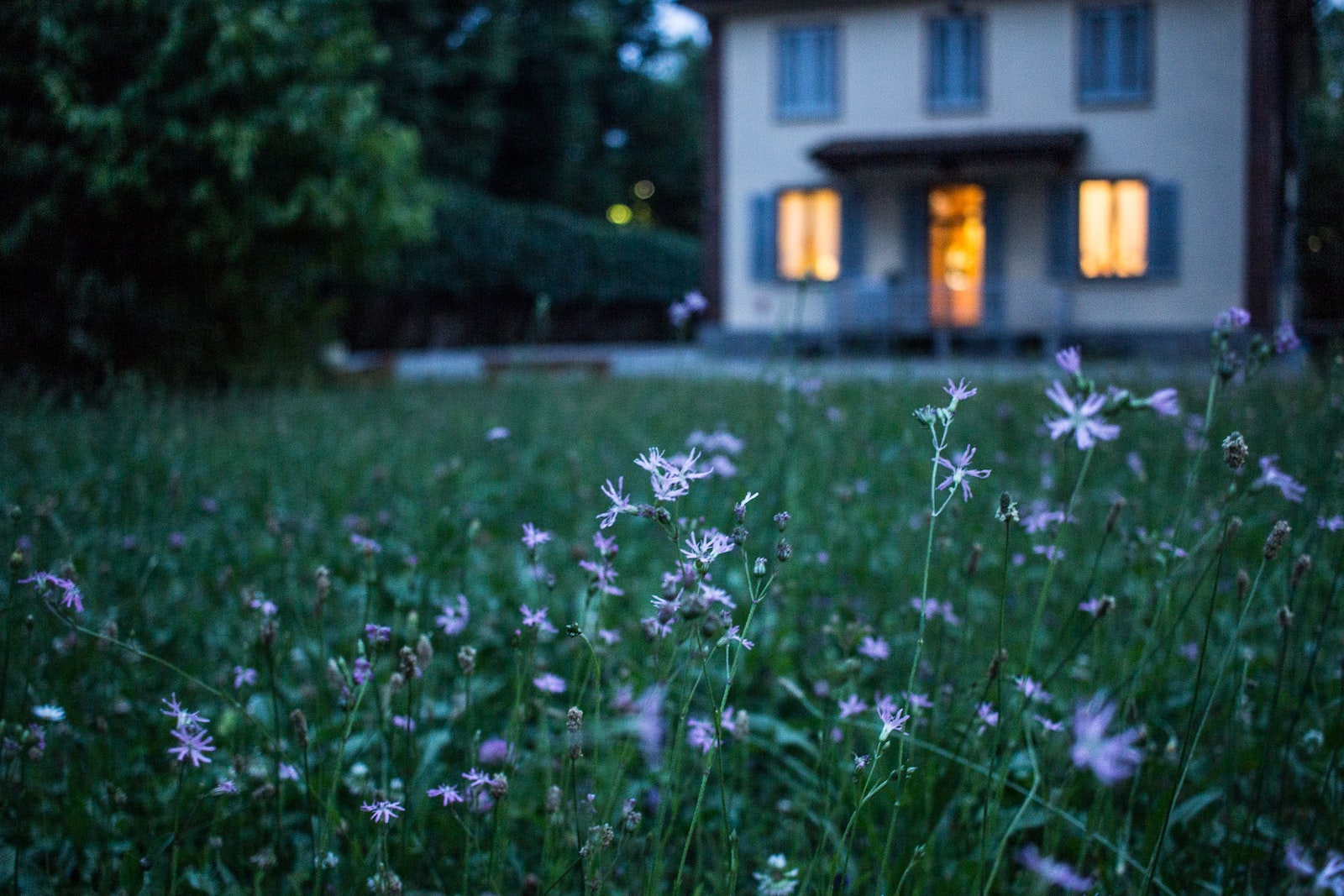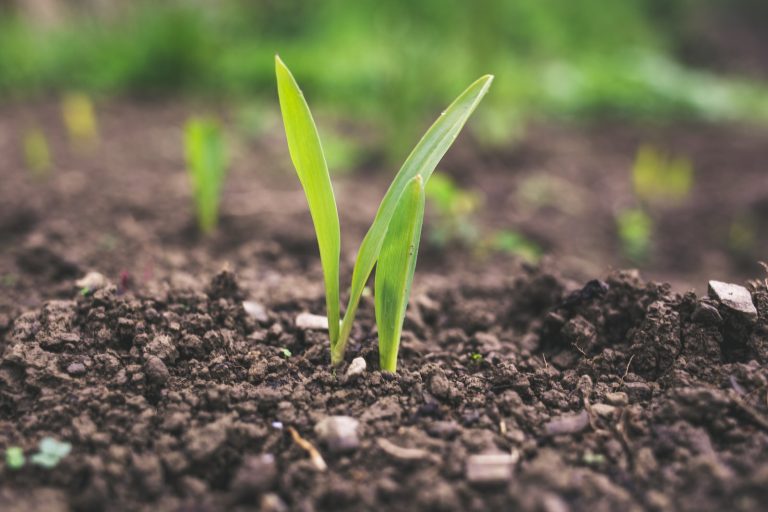Best Practices for Caring for Your Lawn

Are you tired of looking out at a lackluster lawn and wondering where to start? Caring for your lawn can be an overwhelming task, but with the right practices, it doesn’t have to be. A well-maintained lawn not only adds curb appeal to your home but also creates a relaxing oasis for you and your family to enjoy. Let’s dive into some best practices that will keep your lawn green, healthy and thriving all season long!
Lawn Care Basics
Watering: How much, how often, and when to water your lawn
Lawns need one inch of water per week. The best time to water your lawn is in the early morning hours before 10 AM. Watering in the evening can promote fungal growth and disease.
If you let your lawn go too long without watering, you may cause permanent damage or even kill your grass. If you’re unsure how much to water, check the color of your grass. If it’s beginning to turn brown, it’s time to give it a good soaking.
Mowing: How high (or low) to mow your lawn
You should mow your lawn at least once a week, and more often if necessary. The height of your grass will determine how often you need to mow. For most lawns, a good rule of thumb is to never remove more than one-third of the grass blade with each mowing. This helps protect the roots and prevents scalping (when too much grass is cut off). Be sure to adjust the blade on your mower each season so that you’re always cutting at the proper height.
Common Lawn Care Mistakes
One of the most common lawn care mistakes is mowing your lawn too short. Mowing your lawn too short can damage the grass and make it more susceptible to disease and pests. It can also make your lawn look patchy and uneven. The best height for your lawn is 3-4 inches.
Another common mistake is watering your lawn too much. Watering your lawn too much can cause the roots to rot and the grass to die. It’s important to only water your lawn when it needs it, and to water deeply so that the roots can grow deep and strong.
Fertilizing your lawn too often is another common mistake. Fertilizing your lawn more than once a year can actually damage the grass and make it less healthy. The best time to fertilize your lawn is in the fall, so that the grass has time to absorb the nutrients before winter.
Lastly, one of the most common mistakes people make when caring for their lawns is not aerating their soil regularly. Aerating your soil helps improve drainage and prevents compaction, which can lead to unhealthy grass. Aerate your soil at least once a year, or more often if you have heavy traffic on your lawn.
Choosing the Right Tools for Your Lawn
If you want your lawn to look its best, you need to choose the right tools for the job. There are a lot of different products on the market, so it can be tough to know which ones are worth investing in. Here are a few things to keep in mind as you shop for lawn care products:
- Choose products that are specifically designed for your lawn type. If you have a cool-season grass like Kentucky bluegrass, look for fertilizers and herbicides that are labeled “for use on cool-season grasses.”
- Pick products that match the current conditions of your lawn. If your grass is dry and stressed, look for products that will help it recover. On the other hand, if your lawn is already healthy, you’ll just need to maintain it with regular fertilization and mowing.
- Don’t be afraid to ask for help. If you’re not sure which products are right for your lawn, talk to a professional at your local nursery or garden center. They can give you tailored advice based on your specific situation.
Different Types of Grass and Their Needs
Different types of grass have different water, sunlight, and temperature needs. For example, fescue grasses need more water than bluegrass. And Bermuda grass needs more sunlight than either of those.
Knowing which type of grass you have will help you understand its watering, mowing, and fertilizing needs. It’s also important to know your climate zone so you can select the right grass for your area. The wrong type of grass will require more work to maintain and may not even survive the climate conditions.
Some common lawn grasses include:
- Fescue: Fescue is a cool-season grass that is common in the Northeast and Northwest United States. It is known for its deep green color and ability to stay green even in cold weather. Fescue needs about 1 inch of water per week during the growing season. It can tolerate some shade but does best in full sun.
- Bermuda: Bermuda is a warm-season grass that is common in the southern United States. It has a bright green color and a fine texture. Bermuda needs about 1 to 2 inches of water per week during the growing season. It prefers full sun but can tolerate some shade.
- Bluegrass: Bluegrass is a cool-season grass that is common in the Midwest and Northeast United States. It has a light green color and a medium texture. Bluegrass needs about 1 inch of water per week during the growing season but can tolerate less water. It prefers full sun but can tolerate some shade.
- Ryegrass: Ryegrass is a cool-season grass that is common in the Midwest and Northeast United States. It has a medium green color and a flat texture. Ryegrass needs about 1 inch of water per week during the growing season and can tolerate less water. It prefers full sun but can tolerate some shade.
- St. Augustine: St. Augustine is a warm-season grass that is common in the southern United States. It has a rich, dark green color and coarse texture. St. Augustine needs about 2 inches of water per week during the growing season and prefers full sun but can tolerate some shade.
Fertilizing Your Lawn
Fertilizing your lawn is an important part of keeping it healthy and green. But with so many products on the market, it can be difficult to know which one is right for your lawn. Here are a few tips to help you choose the best fertilizer for your lawn:
- Get a soil test. This will help you determine what nutrients your lawn is lacking and which ones it has in abundance.
- Choose a fertilizer that is specifically designed for your type of grass. Different types of grasses have different nutrient requirements.
- Apply fertilizer at the right time of year. Check the label of the fertilizer you choose to find out when it should be applied. Generally, fertilizers should be applied in early spring or late fall.
- Follow the directions on the fertilizer label. Over-fertilizing can damage your lawn, so it’s important to apply the fertilizer according to the manufacturer’s instructions.
Weed Control Options
Weed control is an important part of lawn care. There are several options for weed control, including chemical and physical methods.
Chemical weed control involves the use of herbicides to kill weeds. Herbicides are available in both liquid and granular form. Physical weed control involves the removal of weeds by hand or with a tool such as a hoe.
Weed control is most effective when it is done regularly. Weeds can be controlled before they have a chance to take over your lawn.
Watering Schedules
Watering your lawn is one of the most important aspects of lawn care. The type of grass, soil, and weather all play a role in how often you need to water your lawn.
Here are some general tips for watering your lawn:
-Water early in the morning or later in the evening to avoid evaporation.
-Check the weather forecast before watering to see if rain is in the forecast.
-Don’t water your lawn if it’s already wet.
-Don’t over water your lawn. Over watering can lead to problems such as fungal growth and root rot.
-Apply water slowly so that it can soak into the root zone.
How to Maintain a Healthy Lawn
If you want your lawn to look its best, you’ll need to put in some effort. Below are some tips on how to maintain a healthy lawn:
- Mowing – Set your mower blade high so that you only remove the top third of the grass blades. This helps the grass to stay strong and able to fight off diseases. Be sure to also alternate your mowing pattern each time you mow so that you don’t create ruts in the lawn.
- Watering – Water deeply and less often so that the roots grow deep and strong. A good rule of thumb is to water for about an hour once a week.
- Fertilizing – Use a slow-release fertilizer so that you don’t have to fertilize as often. Once or twice a year should be sufficient.
- Aerating – Aerating helps reduce compaction and improve drainage. It also allows oxygen, water, and nutrients to reach the roots more easily. Aerate your lawn in the fall so that the grass can recover over winter.
- Control weeds – Hand-pull weeds as soon as you see them so that they don’t have a chance to take over your lawn. You can also use an organic herbicide such as vinegar or soap spray.
Alternatives to Caring for Your Own Lawn
If you’re not up for the task of caring for your own lawn, there are plenty of alternatives. You can hire a professional lawn care service, or purchase sod to install in your yard. Both of these options can be expensive, but they’ll take the hassle out of keeping your lawn looking its best.
If you have the time and patience, you can also consider starting a garden in your yard instead of having a traditional lawn. This will give you the opportunity to get creative with your landscaping and add some personal touches to your yard. No matter what you decide, make sure you take the time to research your options so that you end up with a solution that works best for you and your budget.
Conclusion
Following the best practices for caring for your lawn will go a long way in providing you with a lush, green and healthy outdoor space. Proper watering, mowing, fertilizing and weed control are essential to maintaining the look of your yard.
Remember to water deeply but not frequently; use high-quality fertilizer; practice proper mowing techniques; and eliminate weeds before they take over! Taking care of your lawn may require some effort on your part, but it pays off with an attractive, inviting yard that looks great all year round.

Emma is a talented writer and enthusiastic gardener who shares her passion for plants and gardening on HomeGardenBlog.com. With years of experience in home gardening, Emma has become an expert in everything from planting and harvesting to pest control and soil management.






